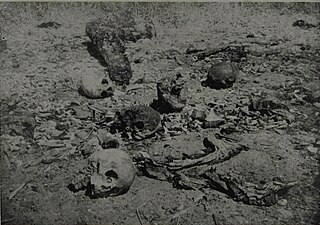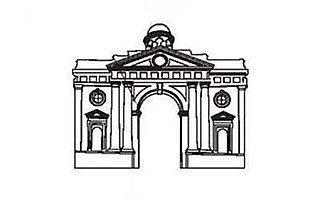
The Partition of India in 1947 was the change of political borders and the division of other assets that accompanied the dissolution of the British Raj in the Indian subcontinent and the creation of two independent dominions in South Asia: India and Pakistan. The Dominion of India is today the Republic of India, and the Dominion of Pakistan—which at the time comprised two regions lying on either side of India—is now the Islamic Republic of Pakistan and the People's Republic of Bangladesh. The partition was outlined in the Indian Independence Act 1947. The change of political borders notably included the division of two provinces of British India, Bengal and Punjab. The majority Muslim districts in these provinces were awarded to Pakistan and the majority non-Muslim to India. The other assets that were divided included the British Indian Army, the Royal Indian Navy, the Royal Indian Air Force, the Indian Civil Service, the railways, and the central treasury. Provisions for self-governing independent Pakistan and India legally came into existence at midnight on 14 and 15 August 1947 respectively.

Gujranwala is a city and capital of Gujranwala Division located in Pakistan. It is also known as "City of Wrestlers" and is quite famous for its food. It is the 5th most populous city proper after Karachi, Lahore, Faisalabad and Rawalpindi respectively. Founded in the 18th century, Gujranwala is a relatively modern town compared to the many nearby millennia-old cities of northern Punjab. The city served as the capital of the Sukerchakia Misl state between 1763 and 1799, and is the birthplace of the founder of the Sikh Empire, Maharaja Ranjit Singh.

The Radcliffe Line was the boundary demarcated by the two boundary commissions for the provinces of Punjab and Bengal during the Partition of India. It is named after Cyril Radcliffe, who, as the joint chairman of the two boundary commissions, had the ultimate responsibility to equitably divide 175,000 square miles (450,000 km2) of territory with 88 million people.

Gurdaspur district is a district in the Majha region of the state of Punjab, India. Gurdaspur is the district headquarters. It internationally borders Narowal District of Pakistani Punjab, and the districts of Amritsar, Pathankot, Kapurthala and Hoshiarpur. Two main rivers Beas and Ravi passes through the district. The Mughal emperor Akbar is said to have been enthroned in a garden near Kalanaur, a historically important town in the district. The district is at the foothills of the Himalayas.

Batala is the eighth largest city in the state of Punjab, India in terms of population after Ludhiana, Amritsar, Jalandhar, Patiala, Bathinda, Mohali and Hoshiarpur. Batala ranks as the second-oldest city after Bathinda. It is a municipal corporation in Gurdaspur district in the Majha region of the state of Punjab. It is located about 32 km from Gurdaspur, the headquarters of the district. It is also a Police district. Batala holds the status of the most populated town of the district with 31% of the district's total population. It is the biggest industrial town in the district.

British Punjab was a province of British India. Most of the Punjab region was annexed by the British East India Company on 29 March 1849, and declared a province of British colonial rule; it was one of the last areas of the Indian subcontinent to fall under British control. In 1858, the Punjab, along with the rest of British Raj, came under the direct colonial rule of the British Crown. It had a land area of 358,355 square kilometers.

Sikhism in Pakistan has an extensive heritage and history, although Sikhs form a small community in Pakistan today. Most Sikhs live in the province of Punjab, a part of the larger Punjab region where the religion originated in the Middle Ages, with some also residing in Peshawar in the Khyber-Pakhtunkhwa province. Nankana Sahib, the birthplace of Guru Nanak, the founder of Sikhism, is located in Pakistan's Punjab province. Moreover, the place where Guru Nanak died, the Gurudwara Kartarpur Sahib is also located in the same province.

Kartarpur is a town located, just 102 km from Lahore city in the Shakargarh Tehsil, Narowal District in Punjab, Pakistan. Located on the right bank of the Ravi River, it is said to have been founded by the first guru of Sikhism, Guru Nanak, where he established the first Sikh commune.

Sardar Gurbachan Singh was a Sikh scholar, professor, and author. He was born in Moonak, Sangrur district. He was a lecturer at the Sikh National College at Lahore. At the Banaras Hindu University he held the Guru Nanak Chair of Sikh Studies. He received the Padma Bhushan in 1985. He received in 1985 the National fellowship by the Indian Council of Historical Research, New Delhi.

A Jatha is an armed body of Sikhs that has existed in Sikh tradition since 1699, the beginning of the Khalsa. A Jatha basically means a group of people.
It is estimated that the city of Lahore, Pakistan, has a Muslim majority with 94.7% and Christian minority constitute 5.1% of the population and rest Sikhs and Hindus constitute the remaining 0.2%. There is also a small but longstanding Zoroastrian community.

The 1947 Rawalpindi massacres refer to widespread violence, massacres, and rapes of Hindus and Sikhs by Muslim mobs in the Rawalpindi Division of the Punjab Province of British India in March 1947. The violence preceded the partition of India and was instigated and perpetrated by the Muslim League National Guards—the militant wing of the Muslim League—as well as local cadres and politicians of the League, demobilised Muslim soldiers, local officials and policemen. It followed the fall of a coalition government of the Punjab Unionists, Indian National Congress and Akali Dal, achieved through a six-week campaign by the Muslim League. The riots left between 2,000 and 7,000 Sikhs and Hindus dead, and set off their mass exodus from Rawalpindi Division. 80,000 Sikhs and Hindus were estimated to have left the Division by the end of April. The incidents were the first instance of partition-related violence in Punjab to show clear manifestations of ethnic cleansing, and marked the beginning of systematic violence against women that accompanied the partition, seeing rampant sexual violence, rape, and forced conversions, with many women committing mass suicides along with their children, and many killed by their male relatives, for fear of abduction and rape. The events are sometimes referred to as the Rape of Rawalpindi.
During the Partition of India, violence against women occurred extensively. It is estimated that during the partition between 75,000 and 100,000 women were kidnapped and raped. The rape of women by men during this period is well documented, with women sometimes also being complicit in these attacks. In March 1947, systematic violence against women started in Rawalpindi where Sikh women were targeted by Muslim mobs. Violence was also perpetrated on an organized basis, with Pathans taking Hindu and Sikh women from refugee trains while one alleged that he witnessed armed Sikhs periodically dragging Muslim women.

After the Partition of India, during October–November 1947 in the Jammu region of the princely state of Jammu and Kashmir, many Muslims were massacred and others driven away to West Punjab. The killings were carried out by extremist Hindus and Sikhs, aided and abetted by the forces of Maharaja Hari Singh. The activists of the Rashtriya Swayamsevak Sangh (RSS) played a key role in planning and executing the riots. An estimated 20,000–100,000 Muslims were massacred. Subsequently, many non-Muslims were massacred by Pakistani tribesmen, in the Mirpur region of today's Pakistani administered Kashmir, and also in the Rajouri area of Jammu division.

The Partition Museum is a public museum located in the town hall of Amritsar, Punjab, India. The museum aims to become the central repository of stories, materials, and documents related to the post-partition riots that followed the division of British India into two independent dominions: India and Pakistan. The museum also focuses on the history of the “anti-colonial movement, the Jallianwala Bagh massacre, the Komagata Maru incident, the All India Muslim League and the Indian National Congress, and the journey of resilience and recuperation for women”. The building wherein the museum is located in Amritsar was also “once the British headquarters and a jail”. The museum was inaugurated on 25 August 2017.

The Unsafe Asylum: Stories of Partition and Madness is a 2018 collection of short stories by Anirudh Kala. The book includes a number of interlinking stories which explore the effects of partition on the mental health of people from both India and Pakistan.
The 1947 Kamoke train massacre was an attack on a refugee train and subsequent massacre of Hindu and Sikh refugees by a Muslim mob at Kamoke, Pakistan on 24 September 1947 following the partition of India. The train was carrying around 3,000-3,500 refugees from West Punjab and was attacked 25 miles from Lahore by a mob of thousands of Muslims. Figures for the number of people killed vary, with West Punjab officials reporting figures of around 400 and East Punjab-based reports suggesting thousands of casualties. Additionally, around 600 female refugees were abducted by the attackers. Local railway officials, Muslim League National Guards and local goons aided and participated in the massacre and the subsequent abductions of the surviving female refugees.
The 1948 Gujrat train massacre was an attack on a refugee train and massacre of Hindu and Sikh refugees by armed Muslim Pathans at Gujrat, Pakistan on 12 January 1948. 1,300–1,600 Hindus and Sikhs were killed in the massacre, 150 were wounded. The train was carrying 2,400 Hindu and Sikh refugees from the North West Frontier Province and taking them to India following their displacement due to the partition of India in August of the previous year. Only 750 of these refugees are reported to have survived and made it to India.
Major General Mohindar Singh Chopra (1907–1990) was an Indian Army General Officer who was the Brigadier in charge of stopping the Partition Riots in Punjab and Bengal. He stopped riots and genocides from taking place with military prowess and made sure that the Indian Army remained a secular fighting force- true to its ideals of protection and peace.














